Wouldn’t it be nice if there was an easy, safe, and free type of firearms training you could do at home to improve your skills and shoot better?
Well, there is, and always has been: It’s called dry fire. Dry fire means shooting without ammo, and it’s a surprisingly helpful skill builder.
Plus…you can do it with almost any type of firearm. We are going to dive deep into how to dry fire, cover a few dry fire drills, and of course…bust a few myths along the way.
Table of Contents
Loading…
Why You Should Trust Us
I am an NRA-certified instructor and also a concealed carry trainer out of Florida. I served as a Marine infantryman in my prior life, so I’ve had plenty of time behind guns.
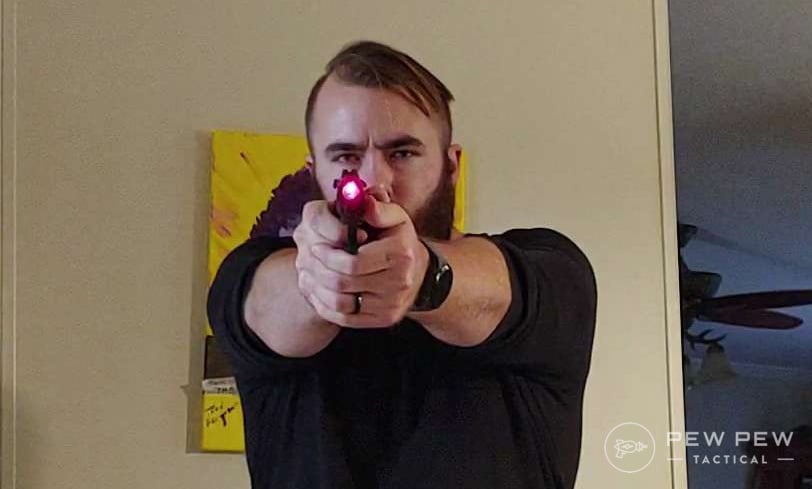
Between instructing, serving in the military, and testing and evaluating firearms over the years, I’ve come to learn a thing or two about training and being trained. I am a huge proponent of dry fire, and it is something I practice regularly.
What is Dry Fire?
Dry fire is the act of simulating the firing of your weapon without ammunition.
Basically, you’re doing everything you’d normally do to fire off a shot…but without any ammo in (or even near) the gun.
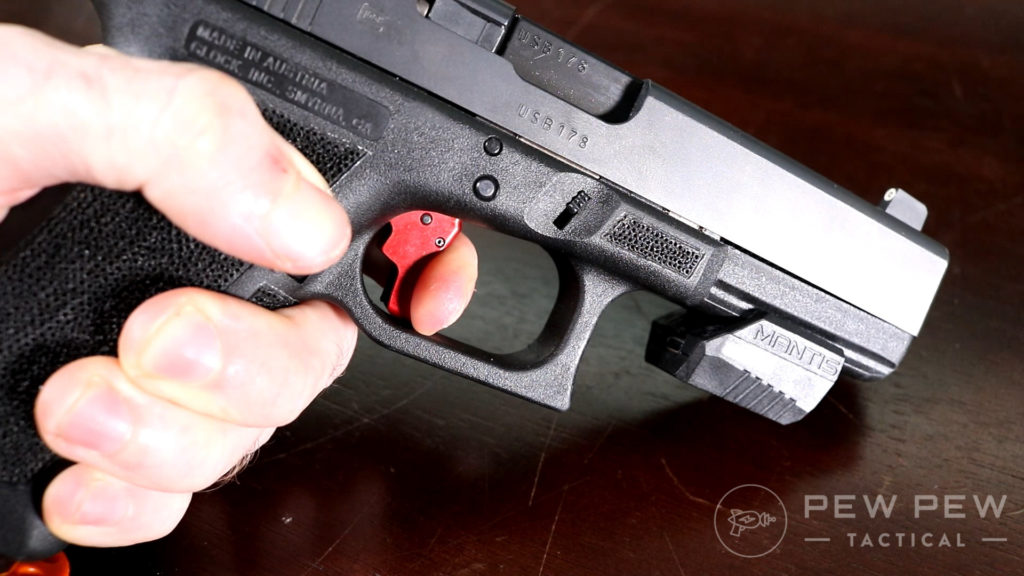
Dry fire is one of my favorite ways to train new shooters on how to handle a firearm safely and teach them the very basics of weapon manipulation.
It can be done inside the home with no equipment beyond your handgun, but there are some things you need to know to stay safe, and there are a few things that can make dry fire training more effective.
How Dry Fire Helps
Dry fire is the practice of training with your firearm without ammunition. Traditionally, dry fire sees shooters pulling the trigger on an empty chamber to practice all the basics without the need for ammunition.
Dry fire is, without a doubt, one of the most valuable ways to increase and maintain your skills.
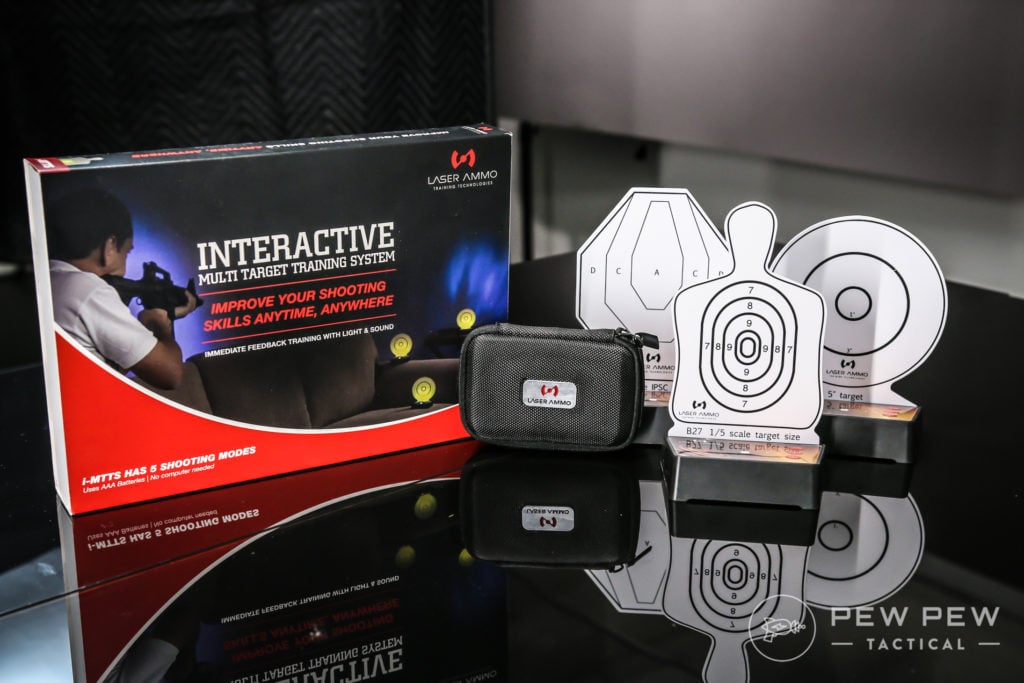
Dry fire allows you to practice your firearm handling skills at home and can go well beyond the repetitive action of just pulling the trigger over and over. Modern dry fire should incorporate drawing, reloads, malfunction drills, and more.
You can walk through your favorite shooting drills dry and chase down the vast majority of firearms skills without firing a shot.
How To Dry Fire Safely and Efficiently
Anytime you are handling a firearm, you need to focus on the fundamentals of firearms safety.
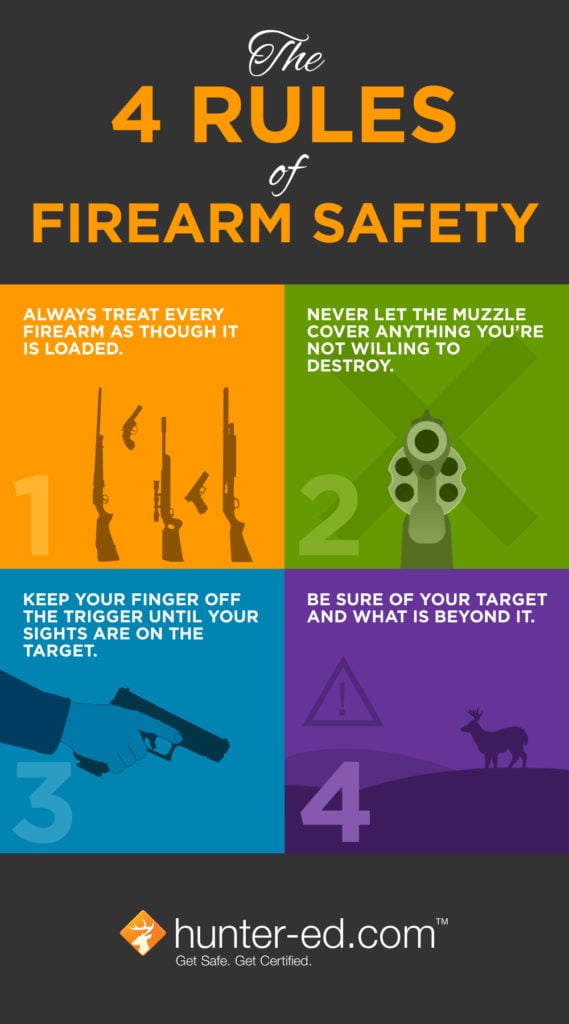
Dry fire is not the time to get lax on your safety habits. Even though you are training without ammunition, you should reinforce safe gun handling.
Always ensure the weapon is unloaded by removing the magazine, locking the slide to the rear, and visually and physically inspecting the chamber.
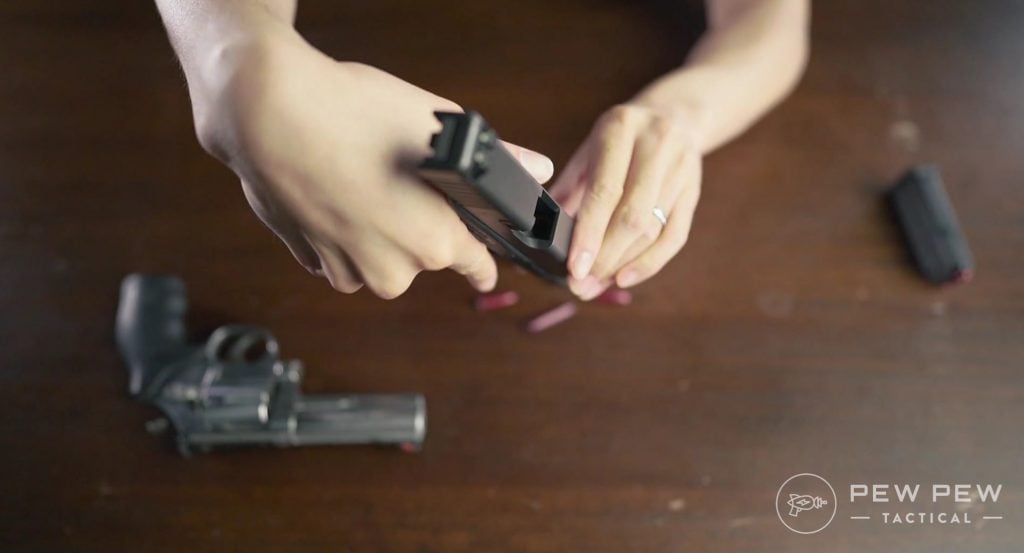
Remove live ammunition from the area to ensure there is zero chance of it entering your firearm. Never point your weapon at another person when dry firing, and always ensure the weapon remains in your control.
If, for whatever reason, you set the weapon down and leave the room, clear it again when you return. Dry firing is pretty simple. Choose a gun, clear it, and pick a small-ish target.
If you can…try to take something out or hang a target specifically for dry-firing. The reason for this is to segregate your dry practice mentality.
There have been stories where after someone finishes dry-firing and makes their weapon hot..to only practice “one more time.”
After you have a target…practice the very basics of firing your weapon. Maintain solid control of your weapon, and stress perfection.
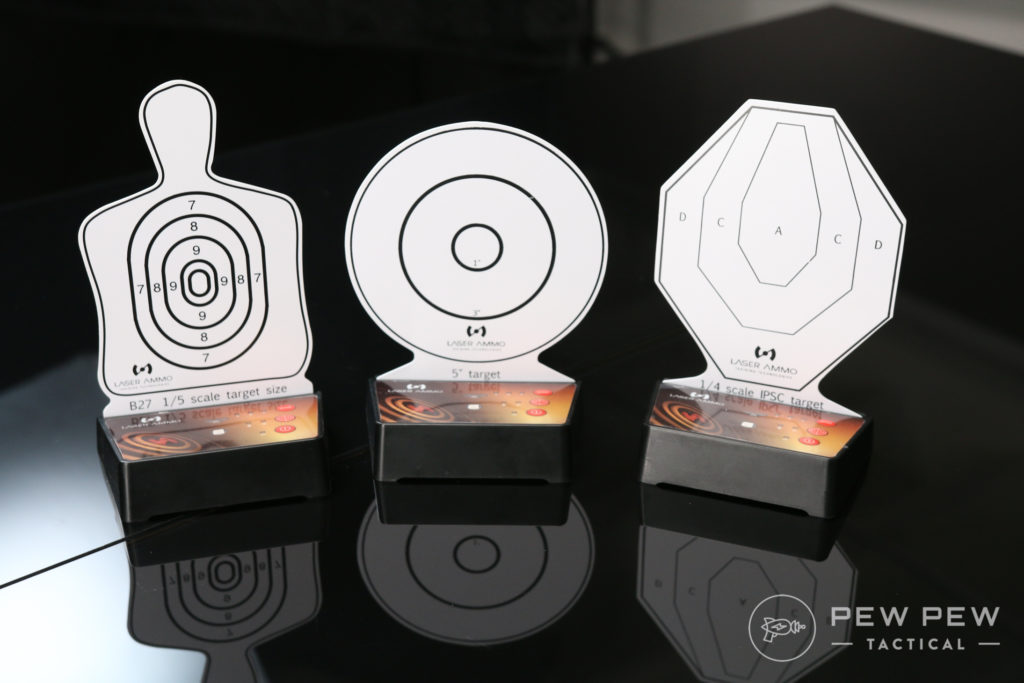
Align the sights perfectly, pull the trigger perfectly, and do not flinch or move in any way to disturb the sight. The goal here isn’t to get a ton of repetitions; it’s to get quality training.
When To Dry Fire
The most beneficial time to utilize dry fire is right after live fire. Your muscle memory will be fresh with your mistakes.
I tend to run my students through the “dry fire Oreo.” We start with dry fire, move to live fire, and finish with dry fire.
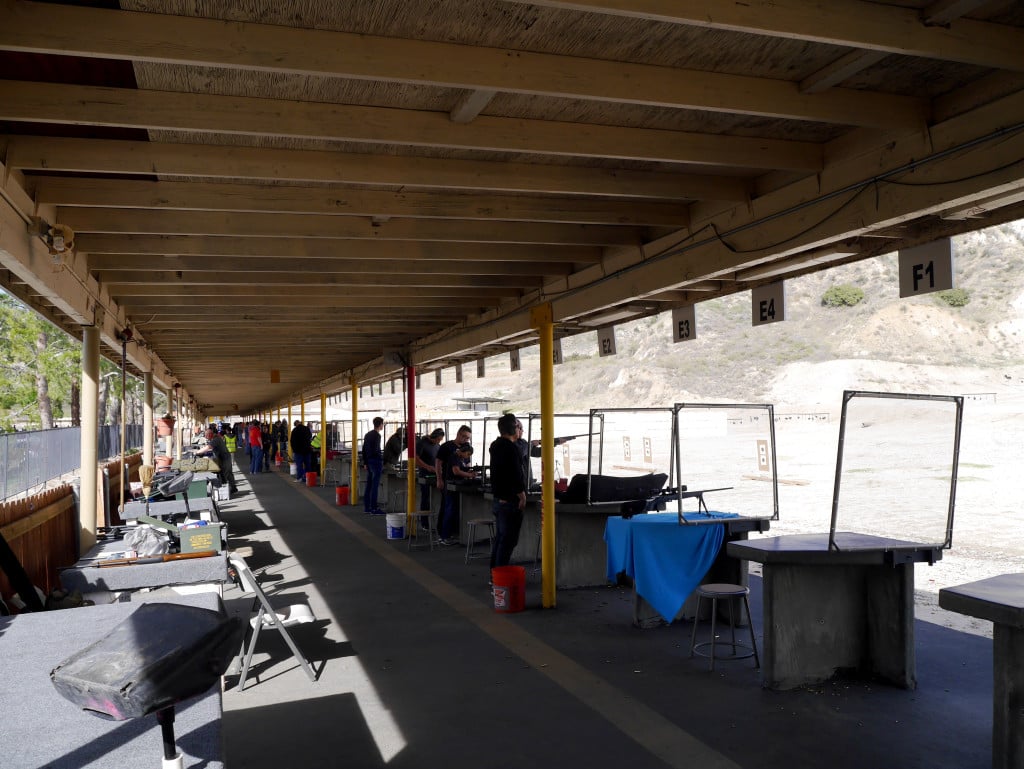
The first few attempts of dry fire will often allow easy diagnoses of their shooting problems because, mentally, they’ll still be prepared to fire a live round.
When I say after shooting, I mean right after shooting, unload, show clear, and dry fire. Use the same live-fire range, same target, everything.
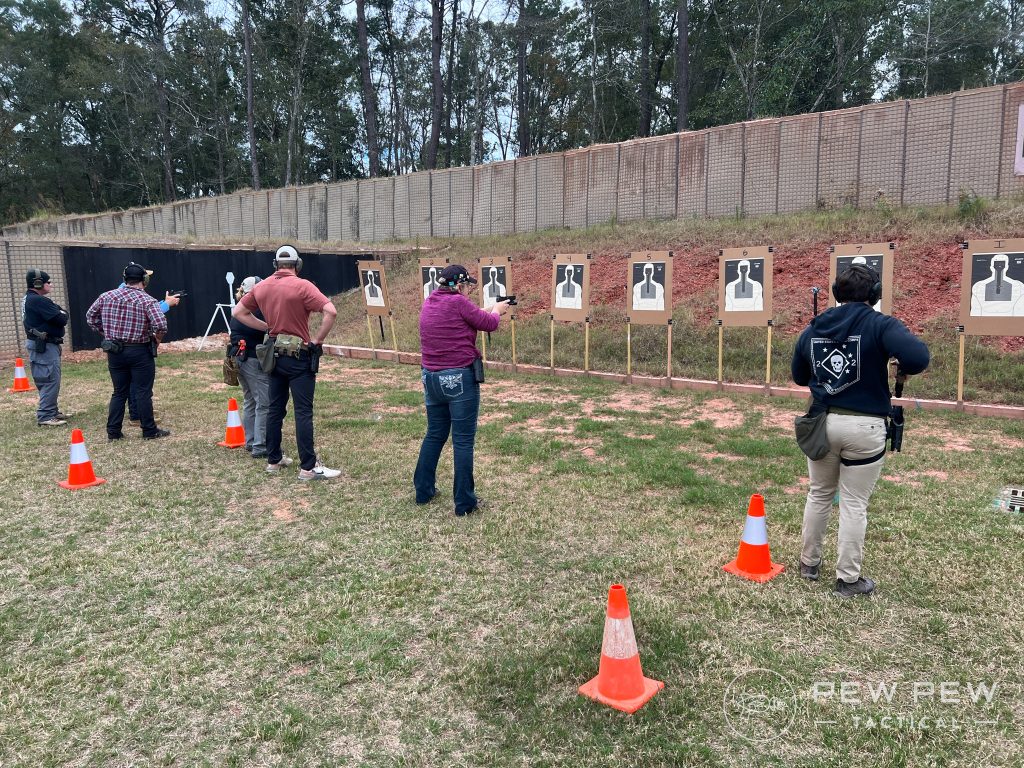
This muscle memory of mistakes will only last for about a dozen or so dry fire attempts before your body and mind remember it is dry firing. Any clenching, eye-closing, flinching, or sympathetic movement will be apparent.
Off the range and at home, I suggest dedicating 15 minutes of dry fire a day. That’s it; that’s all you need to be a better shooter.
Do it after work, before work, or whenever you feel productive enough to give 15 focused minutes to dry firing practice.
But Won’t it Break My Gun?
The most prevalent myth is that dry fire is bad for your gun. Like most myths, this one contains a grain of truth.
There are a variety of firearms out there that dry firing is bad for, mainly rimfires. With a rimfire, the firing pin strikes the rim of the round, and without a round present, the fire strikes the rim of the chamber.
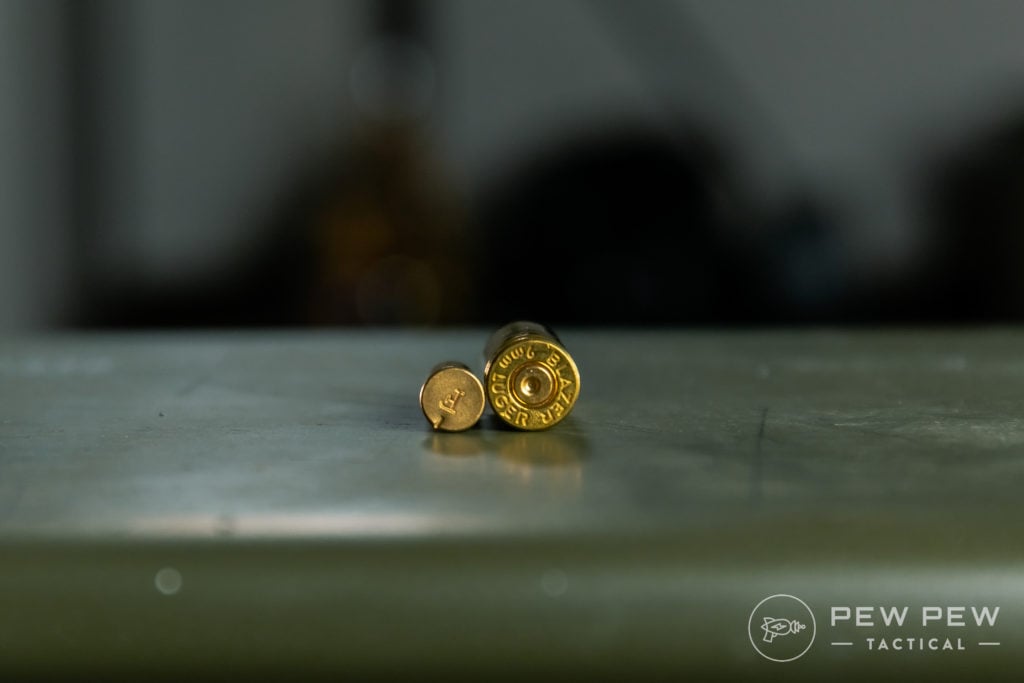
This can lead to mushroomed and dented firing pins as well as dented chambers. The exception being some Ruger rimfires.
The second group of guns is older firearms — including any revolver without a transfer bar and some older semi-automatics.

On one of these older revolvers and semi-autos, the firing pins go too far forwards because they didn’t hit a primer. This causes the firing pin to overtravel and for a portion of it to hit the sides of the firing pin channel.
Over time this was fixed through the use of stronger firing pins in semi-automatics and the use of transfer bars and hammer blocks in revolvers.
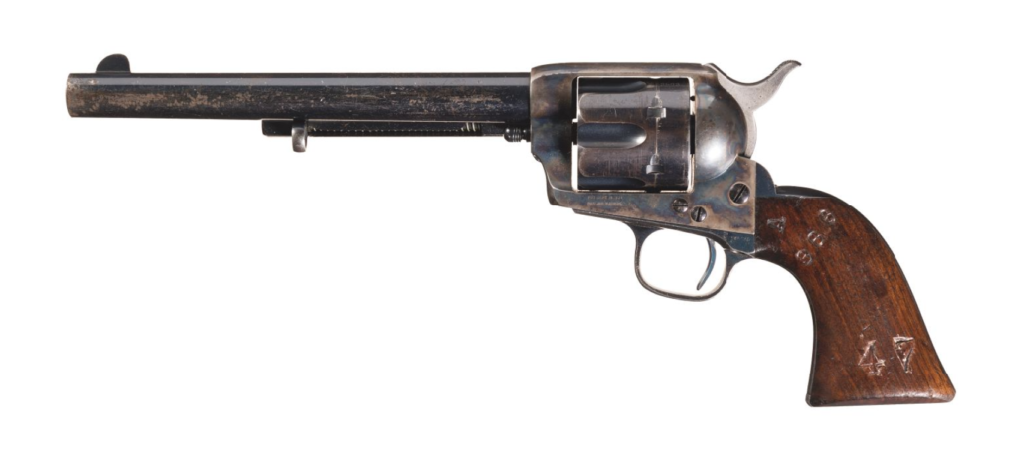
If you own a modern firearm, this is not an issue for you. But if you own an antique of any kind, I’d be wary of dry fire, as well as any revolver with a firing pin attached to the hammer.
If you own one of these older firearms or a rimfire, it’s best to make use of a Snap Cap ($16) while dry firing.
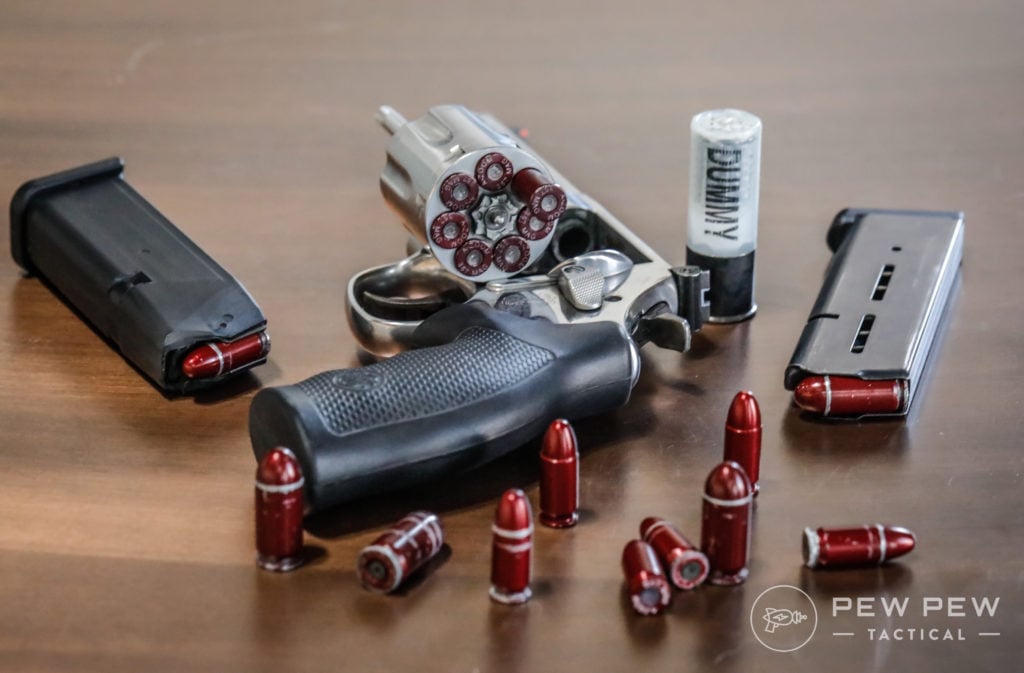
A Snap Cap is a dummy round with a soft primer. This allows the firing pin to land harmlessly on the soft primer. They even make Snap Caps for rimfire rifles, pistols, shotguns, and revolvers.
There are a lot of snap caps and dummy rounds on the market, so be sure to take a look at the Best Dummy Rounds & Snap Caps For Dry-Fire Practice!
Dry Fire Drills
Coin Trick
This is a unique little trick you can do to really practice your trigger control. You only need a coin and a gun.
Balance the coin on the front sight. As the coin rests on the sight, practice your grip control.
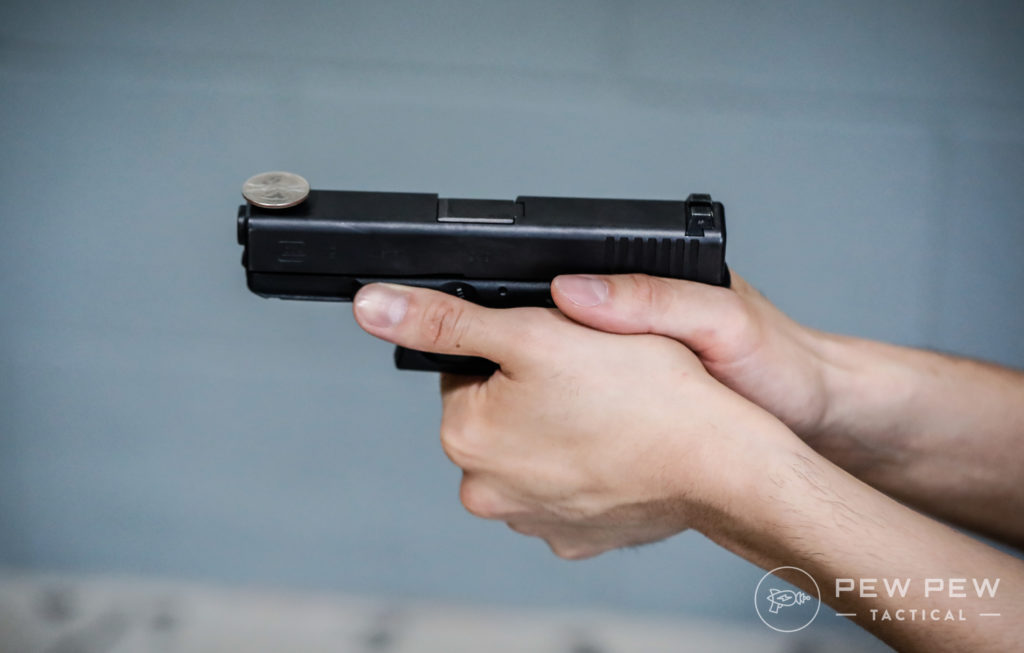
Any error will cause the quarter to fall, which will show you what you’re doing wrong.
Draw
Using a holster and gun, you can practice your open or concealed carry draw.
Drawing practice can start slow, without a timer. This allows you to focus on the proper grip, drawing, and getting the gun on target.
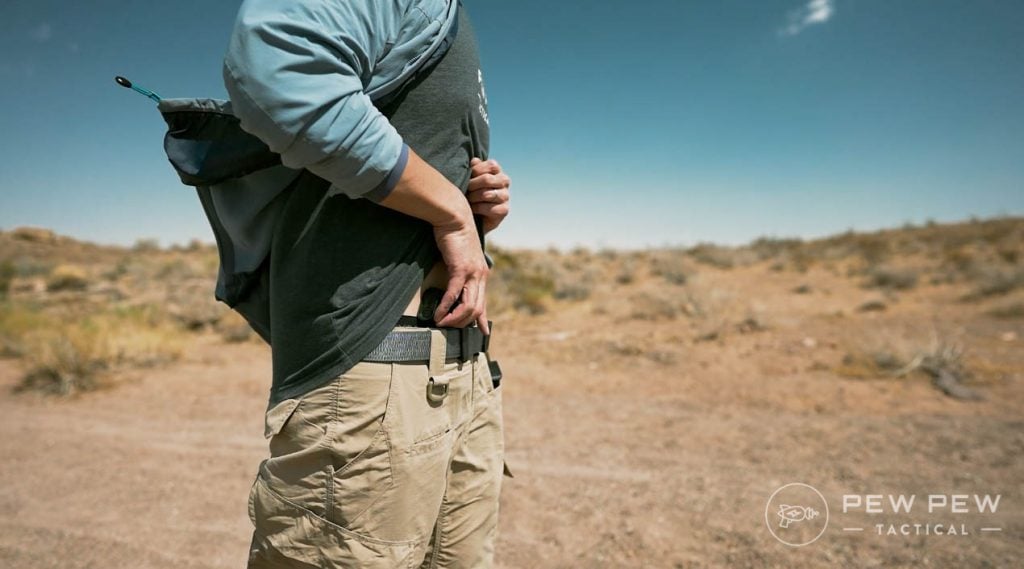
Once things begin to smooth out and you build proficiency, speed things up.
Reloads
Start with your slide locked to the rear, with an empty magazine inserted and a spare mag in a mag pouch.
Get into your normal stance and firing position with the slide locked to the rear. Put your sights on target, register one mental “bang” and reload your firearm.
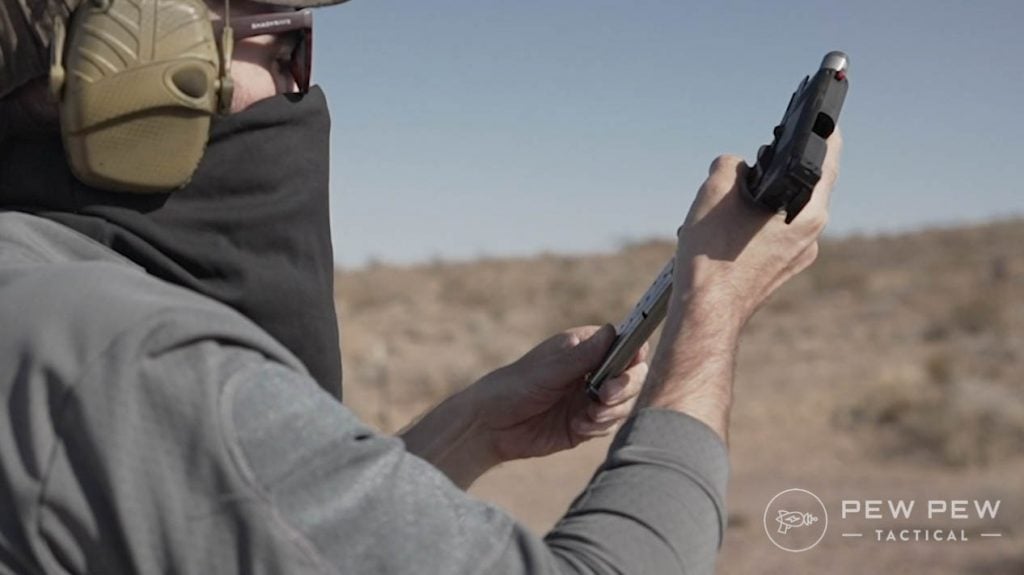
To up the ante, remove the spring and follower from your mag. This will allow you to send the slide home during the reload.
You can also pick up some nice training magazines for this purpose that will match the fit and feel of a loaded magazine.
One Hand Shooting
Firing one-handed accurately is twice as hard as firing with two hands. It’s also a good skill to have with a handgun in case of emergency.
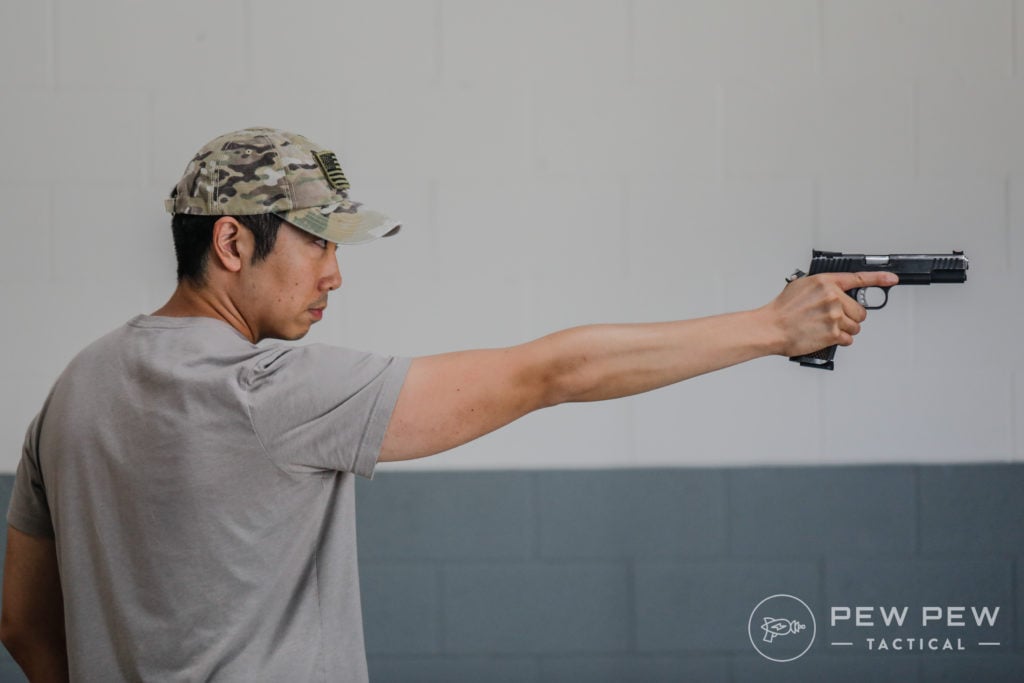
This is quite simple, practice dry firing with one hand and alternate between your dominant and non-dominant hand.
You can also toss in transitions between strong and weak hands.
Positions
You can also spice up any of the above drills by changing positions as you train. Training from the sitting, kneeling, and prone positions make you a more rounded shooter.
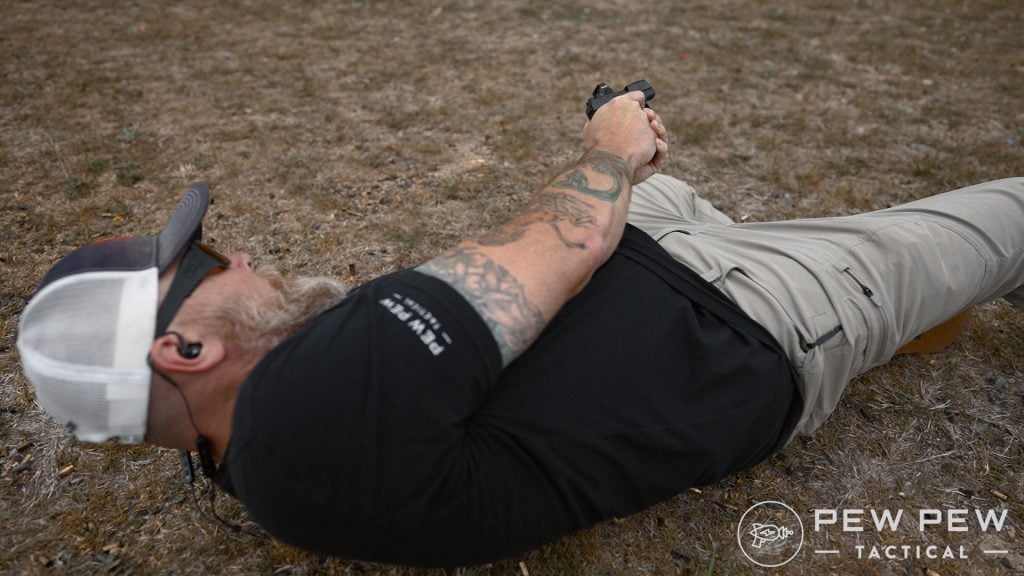
Also, practice engaging targets behind cover. Doorways work well for this.
Keeping a Dry Fire Journal
Outside of gadgets, there are a few ways you can maximize your efficiency with dry fire. To me, dry fire is a lot like working out, and a little planning and organization go a long way.
As such, I like having a dry fire journal. A dry fire journal can be a digital or paper log that allows you to record a wide degree of information.
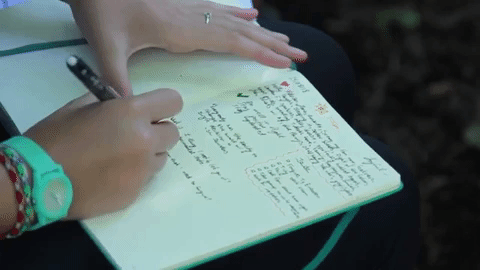
One thing I suggest for every shooter is a plan when they approach dry fire. Know what skills you want to work on prior to beginning.
This way, you don’t spend 5 of your 15 minutes figuring out what you want to do and what you need to train. You can use your dry fire journal to produce a calendar of training for the week: a day for pure marksmanship, a day for reloads, a day for malfunctions, etc.

Journals are also useful post-training for recording your times, reps, thoughts, and jotting down ideas. You’d be surprised how quickly good ideas disappear when you go about the rest of your day.
Best Dry Fire Gadgets
Let’s dive into a few tools that’ll take your dry fire training and push it further. These gadgets and gizmos will add a little extra edge to your dry fire training.
1. MantisX
Prices accurate at time of writing
Prices accurate at time of writing
-
25% off all OAKLEY products - OAKLEY25
Copied! Visit Merchant
Pros
- Affordable
- Good training programs
- Tons of feedback
Cons
- Learning curve
The MantisX is the pinnacle of dry fire technology.
This tiny little block attaches to your rifle, pistol, or shotgun and provides real-time information regarding everything from trigger pull to draw.
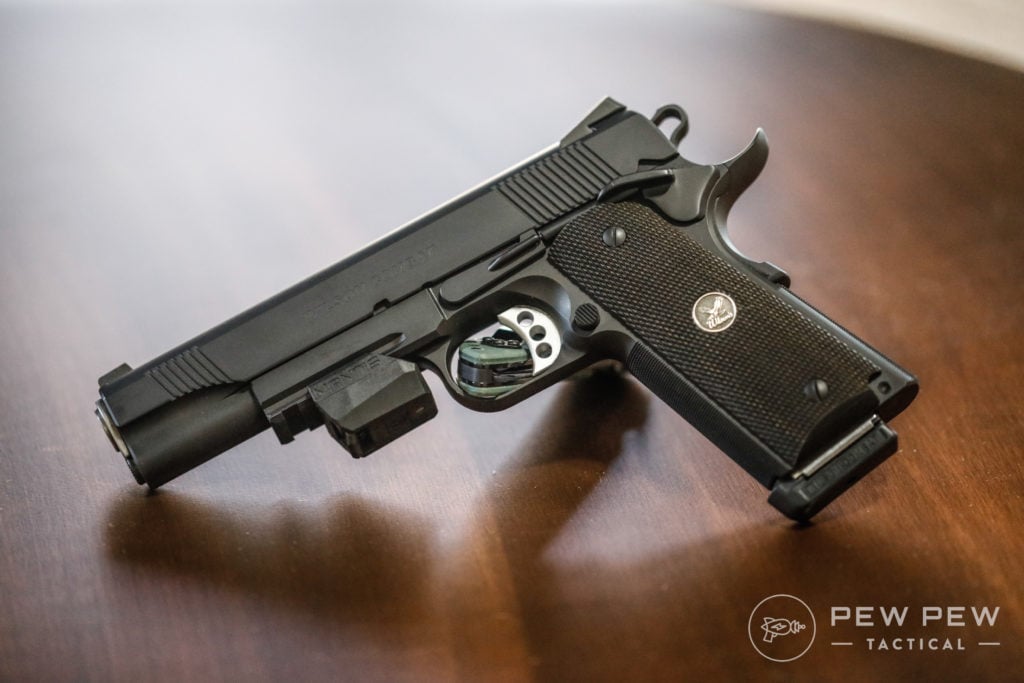
It’s a powerful tool offering measurable data to diagnose issues and track improvement. Users can see exactly what they are doing wrong and work to fix it.
The information feeds back to your Android or Apple device and essentially keeps a journal for you.
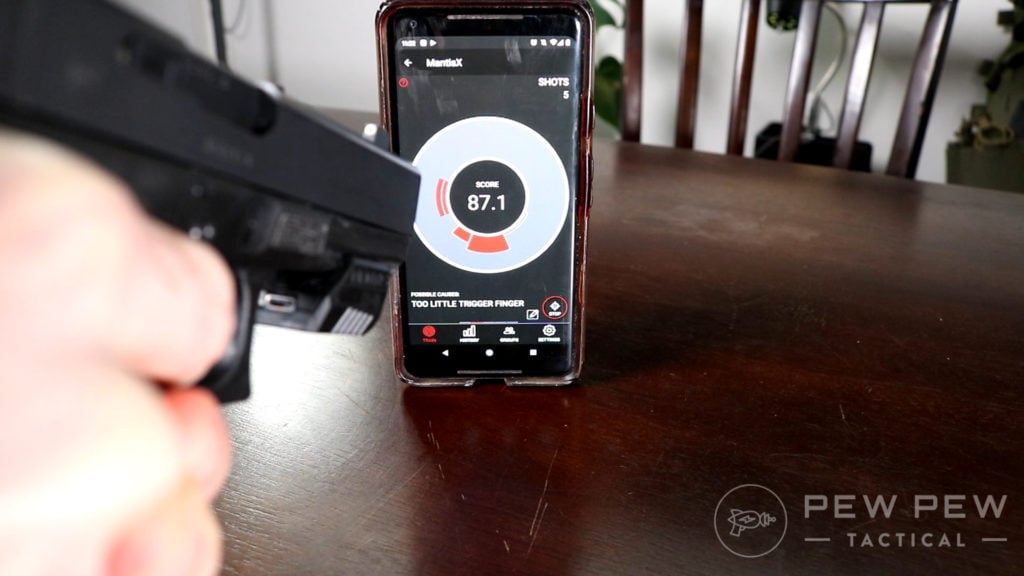
Mantis provides a system of lessons built into the app as well for those days when you can’t come up with your own lesson plan.
I love my MantisX, and the information it provides is second to none. It’s a ton of data, and I could probably write 2,000 words just on the information you get.
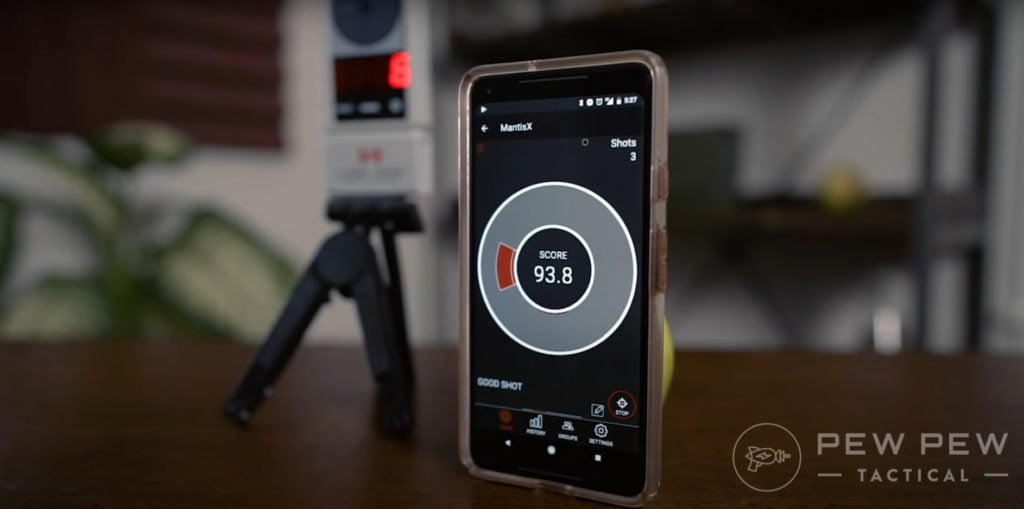
The MantisX is, without a doubt, the ultimate dry fire tool. You can even take it to the range and use it with live ammo and get even more information.
Recently, the company updated the Mantis X to version 2 which and this version is 40% smaller, 50% lighter, has three times the battery life, and four times the data rate, plus a quick detach system.
Click here to read a full review of the Mantis X.
2. SIRT
Prices accurate at time of writing
Prices accurate at time of writing
-
25% off all OAKLEY products - OAKLEY25
Copied! Visit Merchant
Pros
- Safe option
- Many different models
- Realistic manual of arms
Cons
- Expensive
The SIRT Pistol is a non-firing replica of a full-sized handgun or a pocket pistol.
There’s also an AR-15 laser bolt that drops into your rifle.
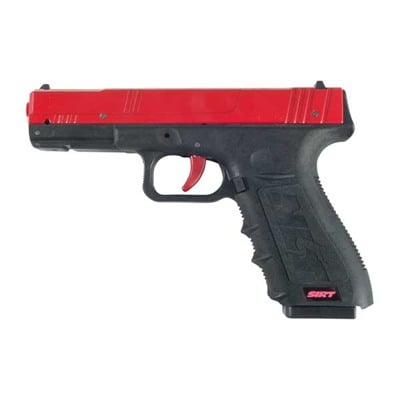
These systems weigh close to the same as the real guns it emulates, and utilizes an integrated laser. The laser activates every time the trigger is pulled, and it shows you where you theoretically hit.
Trigger pull on the SIRT is somewhat lighter than most real handguns, but for learning the basics and having a 100% always safe option, it’s a solid contender.
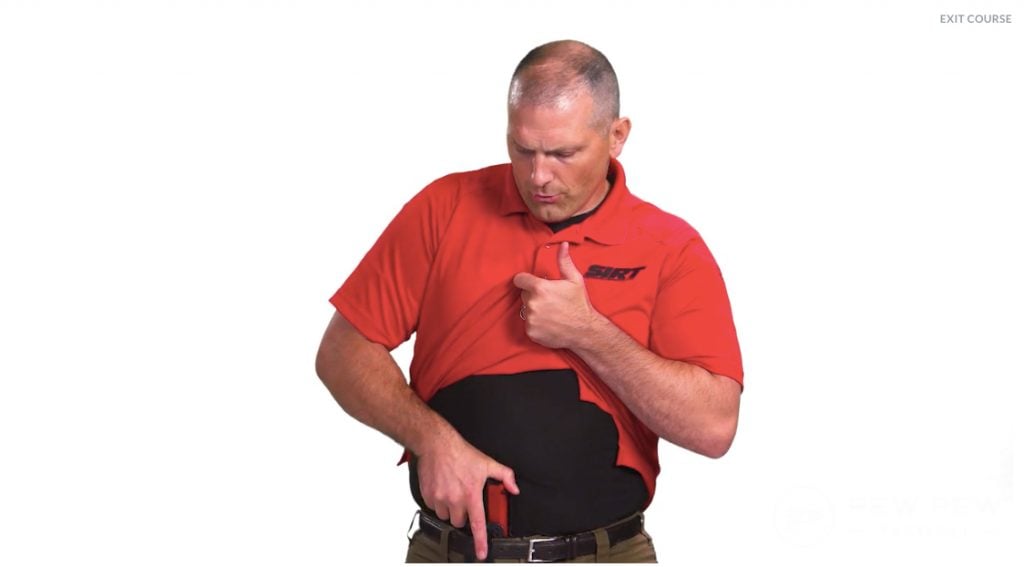
SIRT options give you visual feedback and will function with most of the laser systems we will discuss a little later. SIRT pistols are a little pricey, but the AR bolt is quite affordable.
You can even purchase extra SIRT magazines that replicate the real weight of loaded magazines for training drills
3. TRT Tap Rack Dry Fire Devices
-
25% off all OAKLEY products - OAKLEY25
Copied! Visit Merchant
Pros
- Very affordable
- Multiple calibers
- High vis colors
Cons
- Caliber and platform specific
For less than $10, you get three of these training aids for your pistol or AR-15-style rifle. These little devices fit inside your magazines and defeat your last round bolt hold-open (LRBHO) device.
In my opinion, TRT devices offer two distinct advantages.
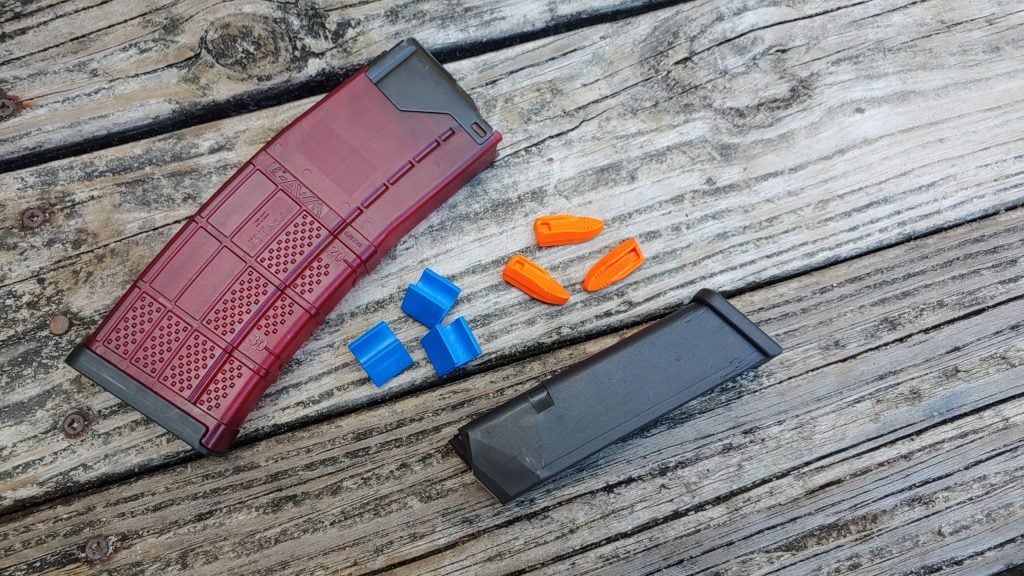
First, they ensure your magazine cannot be loaded during dry fire training. Second, since they pin down your LRBHO you can execute reloads on the fly without constantly dealing with ejecting dummy rounds.
TRT allows you to reload and slam your bolt or slide home without any difficulty. These are also handy when practicing malfunction drills. You can induce a malfunction with a dummy round and execute a proper fix without having to worry about the LRBHO.
Pretty handy for a mere $10.
4. DryFire Mag
Prices accurate at time of writing
Prices accurate at time of writing
-
25% off all OAKLEY products - OAKLEY25
Copied! Visit Merchant
Pros
- Safe option
- Multiple pistols
- Stackable with other products
Cons
- Alters trigger pull somewhat
When you dry fire with a striker-fired pistol, you likely get quite sick of manipulating the slide to recock the pistol between shots. It’s an atypical action that gets old really quick.
The DryFire Mag solves that problem. It replaces your magazine with a DryFire Magazine or DFM. This DFM simulates a trigger pull without the need to ever reset your firing pin.
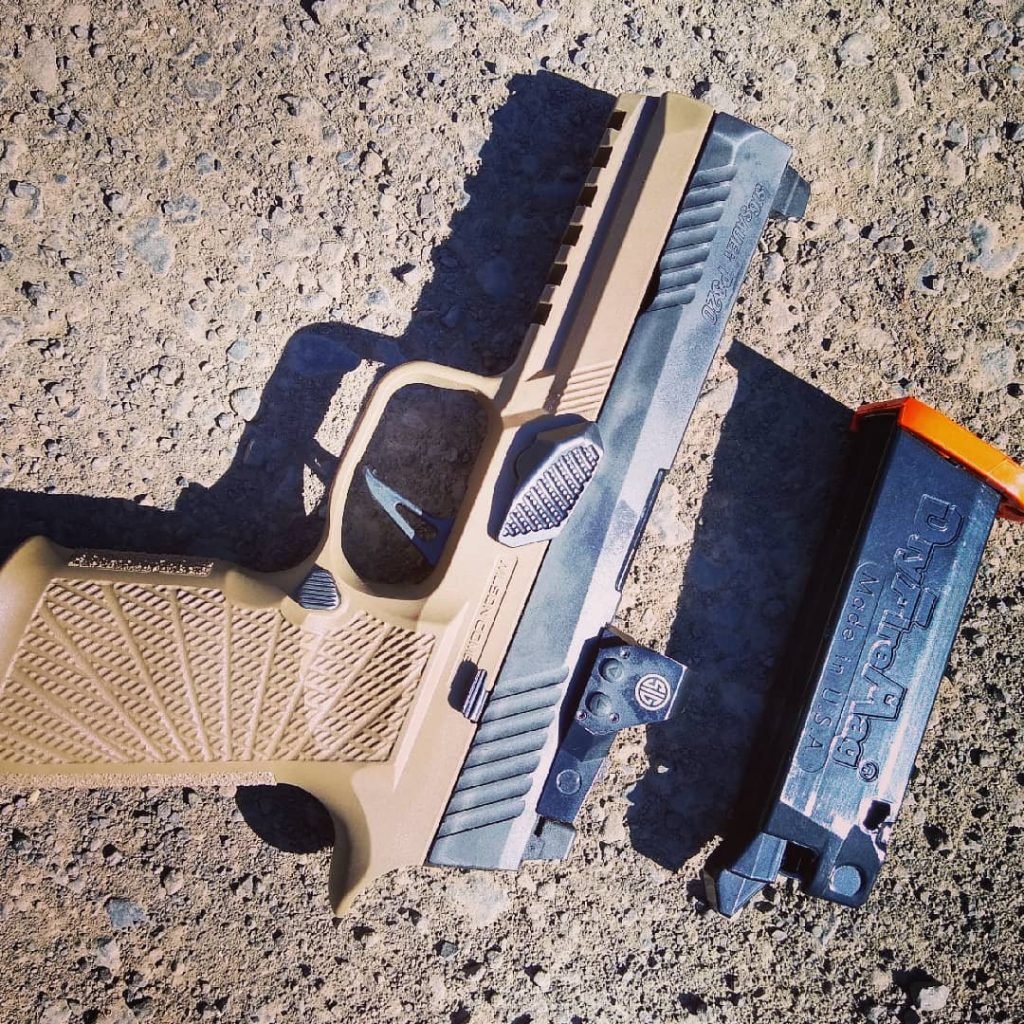
DFMs are made for Glocks, XDs, the P320, and the M&P series by Smith and Wesson. Installation is nothing more than dropping that magazine in.
You can then pull the trigger over and over, and it will simulate the trigger pull of your gun. No more racking the weapon after every shot.
The DFM is great for dry fire practice drills like the El Presidente, Failure to Stop, 5-5-5, or similar drills. It’s an excellent tool, especially when combined with a MantisX.
5. Dummy Ammunition
Prices accurate at time of writing
Prices accurate at time of writing
-
25% off all OAKLEY products - OAKLEY25
Copied! Visit Merchant
Pros
- Affordable
- Multiple calibers
- Multiple firearms
Cons
- Cheap ones can wear out with use
Snap Caps are a must-have and can be used for a wide variety of dry training functions. Personally, I don’t know how I’d practice malfunction drills safely without them.
The same goes for reloading a shotgun on the fly. Dummy rounds allow shooters to safely practice a variety of techniques with a wide variety of weapons.
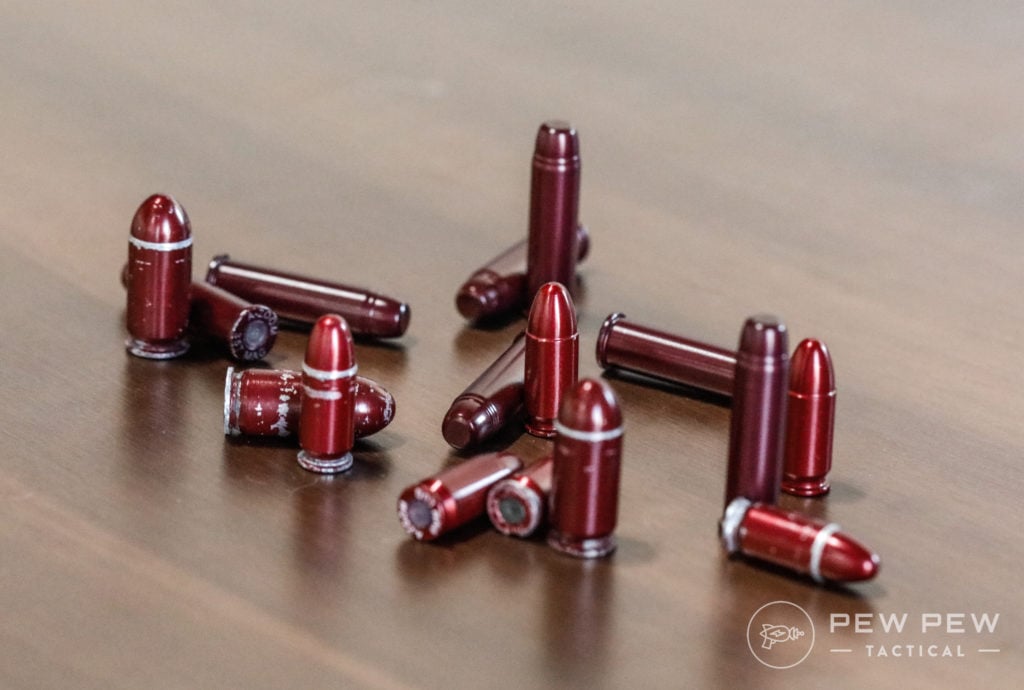
Most rifle and pistol shooters can use dummy rounds to create complicated jams that they then have to work through. For tube-fed shotgun shooters or lever gun aficionados, can practice their reloads on the fly.
Dummy rounds work well for beginners too! The basic motions of loading a magazine or loading a rifle or shotgun can be conducted with dummy ammo.
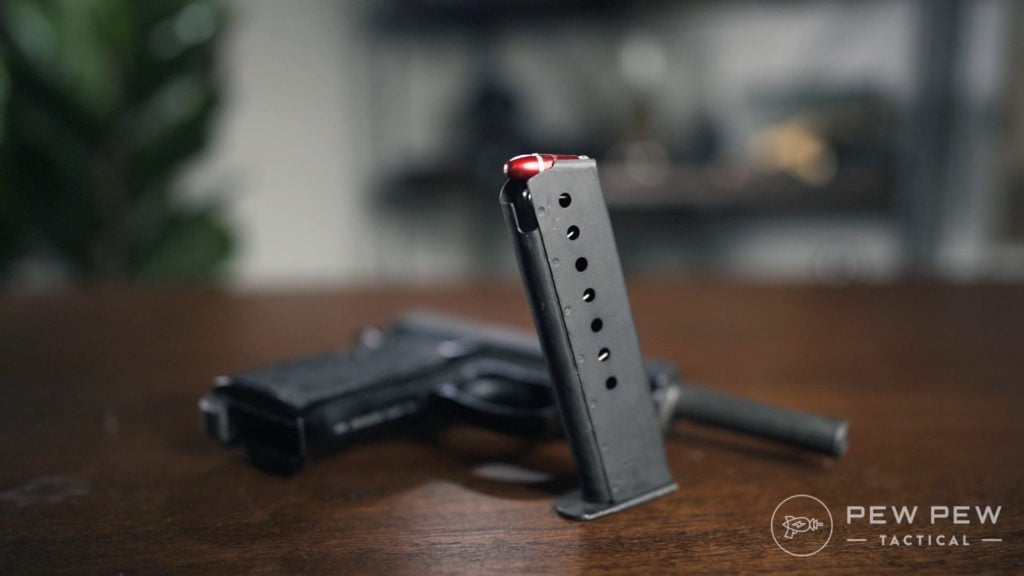
When I teach a newb shooter, I teach them to load their weapon with dummy ammunition. Snap Caps rock, and you should have a few rounds for each caliber you shoot.
Need some more suggestions, check out our article on the Best Dummy Rounds.
6. Mantis Laser Academy
Prices accurate at time of writing
Prices accurate at time of writing
-
25% off all OAKLEY products - OAKLEY25
Copied! Visit Merchant
Pros
- Easy to set up and use
- Wide array of targets
- Also works with SIRT
Cons
- Occasional false positive hits
Mantis makes several products, and the Laser Academy is an excellent example of what they are capable of.
There are lots of Android and iOS apps that pair with a laser cartridge, but the Mantis Laser Academy is by far the best. It’s a complete system of targets, a tripod, a laser cartridge, and several means to hold up the included targets.
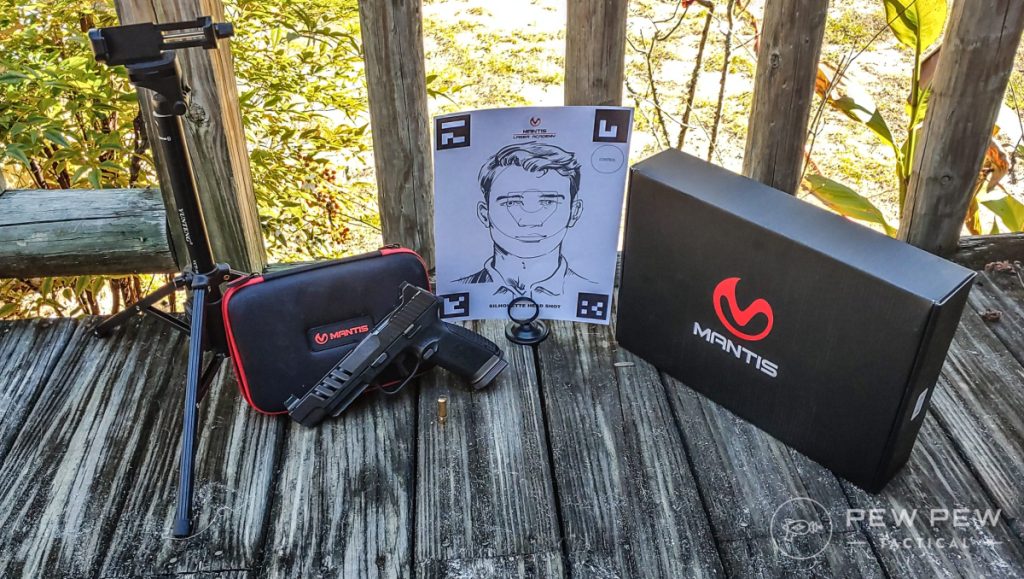
The targets come in both standard and reduced sizes, and they are “smart’ targets, for lack of a better term. The Mantis app ‘reads’ the targets and can tell you via a numerical score where your hits are landing.
Targets are quite varied, and you can print several new targets online if you so choose. One of the FBI Q-style targets stays pinned to my wall permanently.
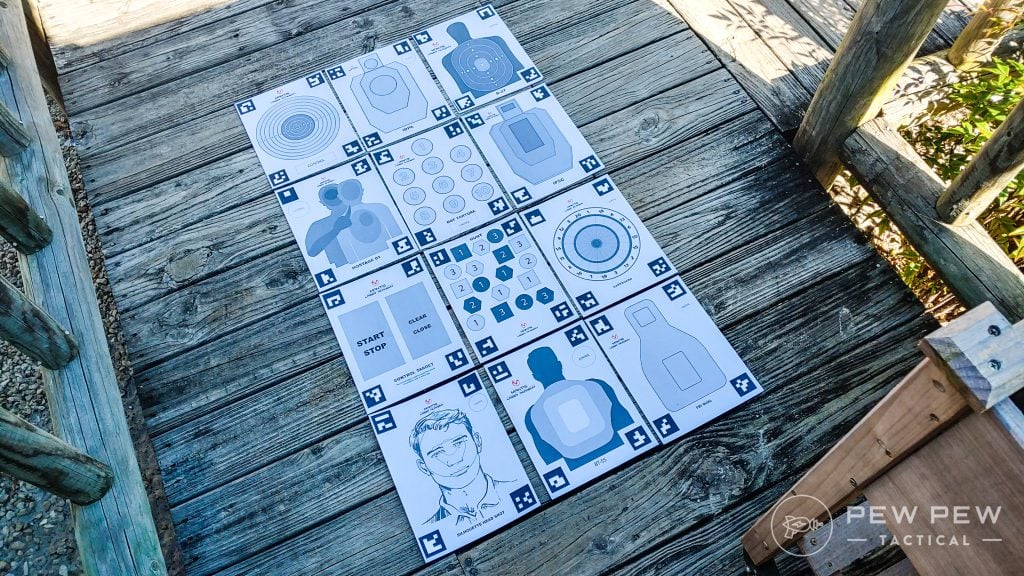
The app has tons of different modes that address specific handgun training techniques, like drawing, reloading, malfunction clearance, etc. They are all backed by a timer and target that provides time and accuracy feedback.
It even has a multiplayer duel function where two shooters attempt to get higher scores and race to land several shots on target. It’s not only a good bit of training, but it’s fun and entertaining.
Check out our full review of Mantis Laser Academy!
7. Shot Timer
Prices accurate at time of writing
Prices accurate at time of writing
-
25% off all OAKLEY products - OAKLEY25
Copied! Visit Merchant
If you forced me to choose one specific training tool that’s just the very best, it would be a shot timer. Shot timers rule!
Traditionally they are used for shooting and competitive use, but they can be quite handy for dry fire practice.
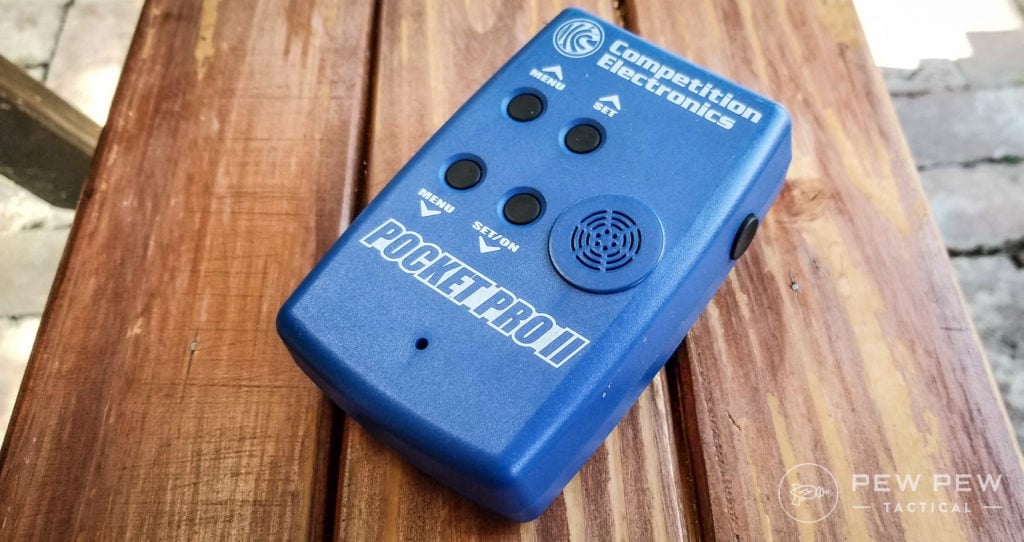
My favorite is the Pocket Pro shot timer. I use it a ton, and it’s held up impressively well. Any shot timer will work, but that’s my personal favorite.
With dry fire, the par time setting allows you to set a timer, then you race against it. It can’t measure your exact time but can set a restrictive guideline to work within.

Shot timers force you to work fast to avoid hearing that second beep. Not to mention, that second beep lays on the stress and gives you a hair of stress inoculation.
When you can start trimming off tens of seconds at a time, you know you have measurable improvement.
8. Range Buddy Pro App
This isn’t a dry-fire app purely; It’s designed around training in general, including live fire range time.
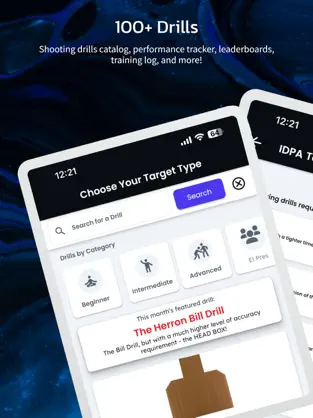
This is a free app (although donations are happily accepted) that provides you with a ton of different drills and courses for fire to practice. It breaks down each drill step by step and is called the Range Buddy Pro due to its convenience of being on your phone.
The app also provides a new feature that can issue you commands. You’ll need a corresponding target with shapes, colors, or numbers, but it can call the commands out to you.
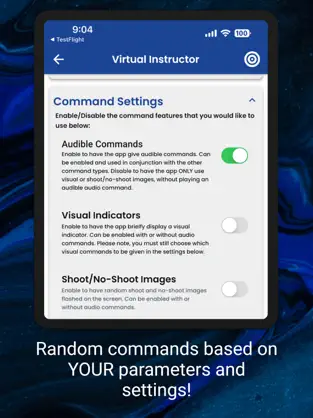
This makes dry fire a little more interesting and dynamic. The Range Buddy Pro app can walk you through dry fire drills that you can run later run live. It is simple but very effective, easy to use, and can be paired with numerous other dry fire gadgets and gizmos.
You can check it out here.
9. Mantis Blackbeard
Prices accurate at time of writing
Prices accurate at time of writing
-
25% off all OAKLEY products - OAKLEY25
Copied! Visit Merchant
Pros
- Improves your shooting
- Saves ammo
- Makes dry fire fun
Cons
- Not for reloads or malfunctions
Yep, another Mantis, but guess what? They are the dry-fire people.
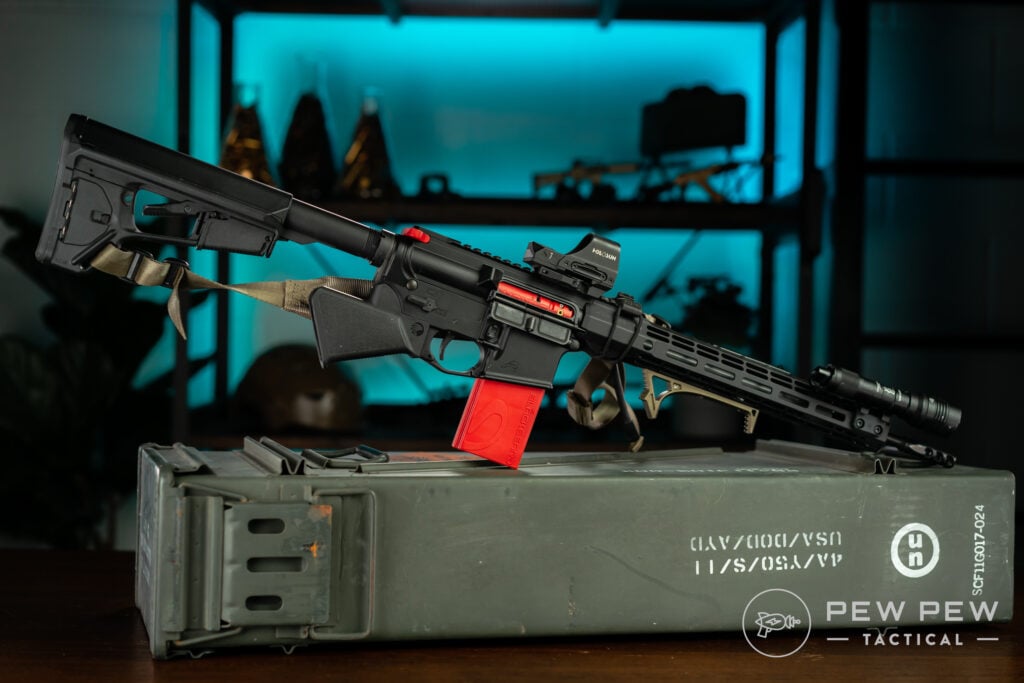
One of their most revolutionary products to date, the Blackbeard is a dry-fire laser system unlike any other — it drops into your AR-15 rifle and replaces the bolt and magazine.
The Blackbeard bolt fires a laser when the trigger is pulled but also automatically resets your trigger. This allows for semi-auto-dry fire. No need to constantly rack the gun.
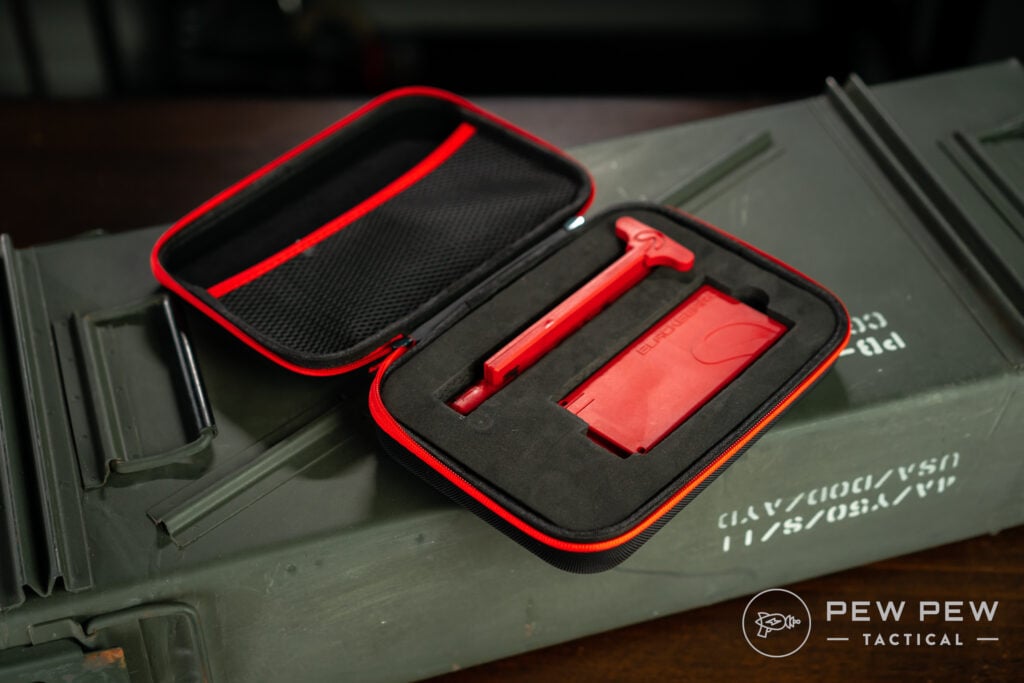
This allows you to get in some true carbine practice. I use it for more than just training my trigger press. I run the VTAC 1-5 drill, failure to stop drills, and many, many more. It’s deeply satisfying and a ton of fun.
The Blackbeard is one of my favorite training gizmos of all time and has saved me so much money in ammo while at the same time making me a better shooter.
Take a peek at our hands-on review of the Blackbeard!
Final Thoughts
Becoming a dry fire pro takes time, patience, and the ability to really keep after it. A few minutes a day can both improve and maintain your skills when you can’t hit the range.
While dry fire training can’t fully replace live fire training, it certainly complements it.
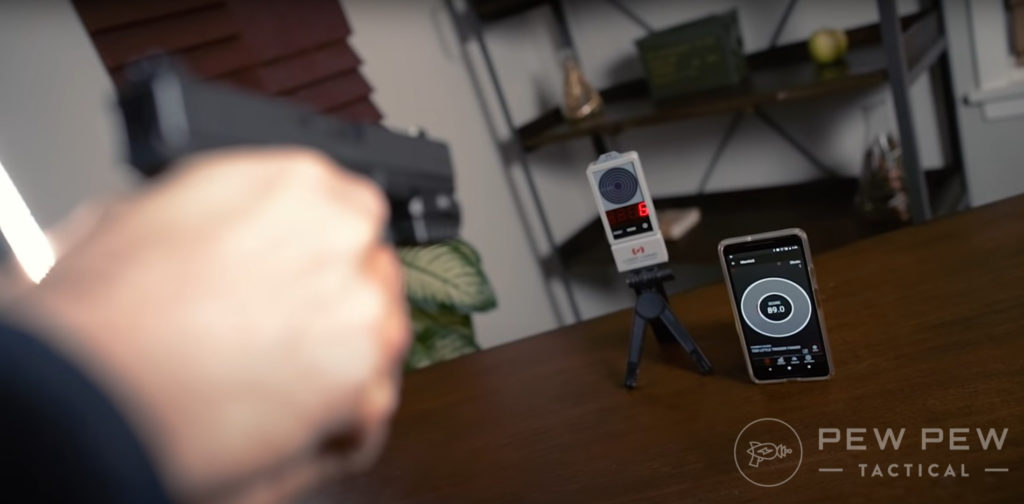
And adding a few gadgets or gizmos makes dry fire not only more entertaining but more dynamic and engaging while turning 15 minutes of so-so practice into incredibly efficient training.
Have more questions about safe and effective training? Let us know in the comments below! And check out our online Beginner Handgun Course…Gun Noob to Gun Slinger. We cover the basics PLUS how to become a crack shot.

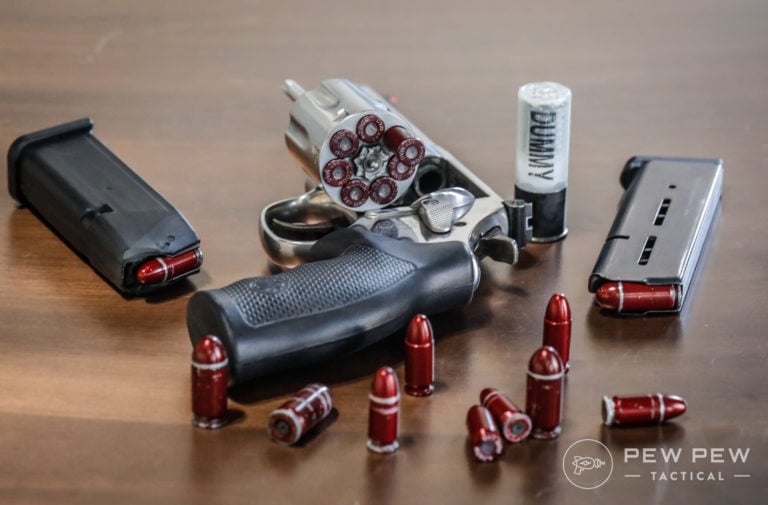
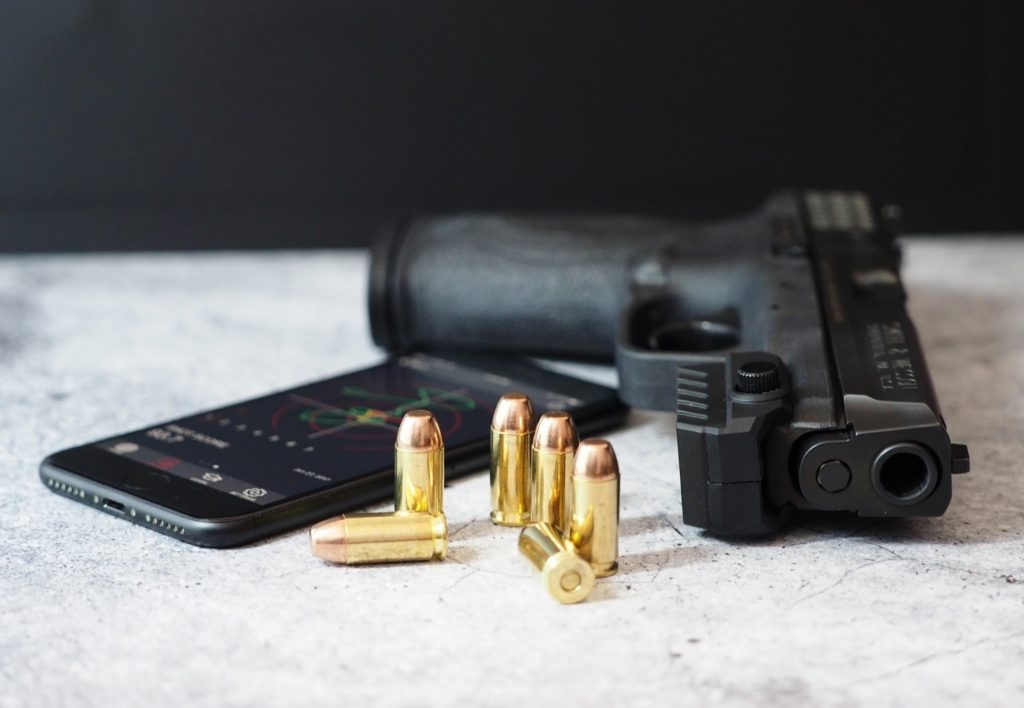
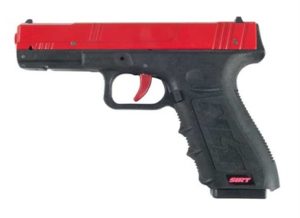


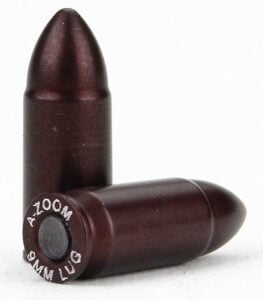



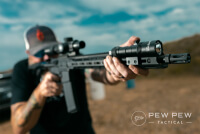

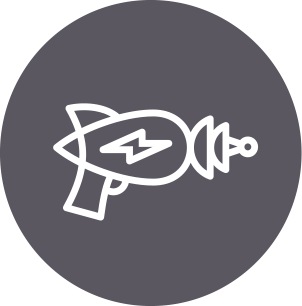
50 Leave a Reply
I use a G-Sight laser cartridge for my dry fire sessions. While it is not as "sophisticated" as the Mantle systems, it does give a good visual indication of one's accuracy. It has a phone app to record the laser strikes, so one can have a history of performance.
Anyone else having issues downloading the Range Buddy Pro app? I tried the link, the App Store (doesn’t even show up in a search), their website… I just get a white screen.
I just downloaded to my iPad, no problem
Yep, after your reply I tried again without issue. Go figure.
Thanks for the great article . I’ve been using the Mantis laser Academy for about a year and it has helped a ton, especially trigger control. They continue to improve the app making it even better. Dry fire has also improved my draw and fire accuracy using the different modes of the app. You can purchase the laser cartridge for $40 and print all the targets from their website if you want to go Dutch. Enough of the app is free to use for what I do.
The only firearm I own or want to own is a revolver, my Smith & Wesson 686 Plus .357 with a 5 inch barrel. Is there any kind of systematic dry fire practice that would benefit me?
Have a look at G-Sight. They may have a laser cartridge in .357.
I compete in both IDPA and USPSA and the best system for realistic (and fun) dryfire that I have used is the LASR Classic system with Camera combined with the Coolfire System with IR laser. I use reduced sized targets (1/3rd, 1/4 and 1/6th) and can set up stage scenarios and classifiers. The Coolfire gives you decent recoil and resets your trigger and With the
camera and IR laser you can see your hits on a laptop screen. You also get time to first draw, split times, transition times and it can also calculate hit factors. This is by far the best dryfire combination for competition shooters.
a Link to your recommendation, thx
Try lasrapp dot com
The last time I looked at Cool Fire, they supported a very limited set of pistol brands.
Has that changed?
They have most of the popular pistols used in competition. I have one for my Sig P320 and CZ SP01.
Have you guys tested the iTarget Cube system?
I use this all the time for dry firing. My aim is much improved now.
Before the days of snap caps, we made our own out of a spent casing, de-capped of the spent primer, and a small piece of rubber inner tube. We'd use a leather punch (the kind with the 6 different size punches), or a hollow hole punch that would produce these neat little rubber 'rounds' just the right size as a primer. A little glue to hold the rubber circle in the primer pocket and "Tah-Dah" - instant snap cap. Actually if you're inventive enough you can use the same trick to make a 'rim-fire' snap cap out of a 5/8" piece of metal rod (old cleaning rod - turned to .223 dia) and a rubber round of .272 dia. Getting these rubber rounds to stay put is a pain - but a small hole drilled through the center and into the rod, then gluing a piece of a sewing pin works. As they say - Necessity is the Mother of invention, but these days, the full plastic snap caps are way mo-cool and feed like a live round if you're into working the action as with the mag changing drills.
I strongly recommend you check out the CoolFire training system.
What would be the better choice, TRT Device or a Dry Fire Mag? I would probably also get dummy rounds. I have a Sig M17 (9mm)
Hey Travis,
I’m a new shooter and am working with a senior tactical trainer I have been shooting for about 6 months now and we just training today. I find all your articles really information and easy to understand thanks for your opinions on all things guns.
Brooke
Instead of snap caps, a small silicone 0-ring big enough to wedge in the back of the slide over the firing can work for some guns to prevent the hammer from needlessly hitting the firing pin. Next steps could be sight re-acquisition during target transitions and even simulating recoil by jerking your wrists / elbows (ammo is expensive!)
Is the Taurus TX22 considered a rim fire and therefore not a candidate for dry fire?
The Russian software of dry fire caught my eye, which works perfectly with such models as SIRT Pistol, but unlike our brands, the price is several times lower. Here is the address link.shooting-soft.com/mtoZCZ
We purchased a laser dry fire system from LaserHIT and am very happy with it!
Back in my USMC days, we always had a "grass week" before range week to help prepare us for rife and pistol qualification day. Grass week was a lot of repetitive dry firing, but it really did help train our muscle memory, teach natural point of aim, breathing rhythm and controlled trigger squeeze.
I also train with the Japanese katana in a martial art called batto-do ... we do a lot of kata with our swords which I view as akin to dry firing. Drawing our blades and moving into a cut then returning the blade (noto) to it's sheath (saya) ... we must demonstrate safe and proficient kata with our swords before we are finally allowed to cut on real targets such as rolled tatami mats or even bamboo. Just like shooting, it's not quite as easy as they make it look in movies. So, yes - I am a big believer in adding dry firing to my firearms training regimen!
My range scores (pistol) increased dramatically after I started dry fire training. I don't do anything fancy I just point my weapon at something like a light switch and work at keeping my sight picture from moving when I fire. Concentrating on just moving my trigger finger alone and keeping the rest of my fingers/hand from moving the gun was the most important thing I ever did to improve my aim, and I did this through the use of dry firing.
P.S. I also bought an airsoft gun that I play/train with inside, and a metal co2 bb gun that cycles like a real semi auto that I play with outside. I think these are fun options for training away from the range (though I believe dry fire to produce the best results)
The coolest and best dry fire trainer I've found is the Coolfire Trainer. Its a replacement barrel for your pistol that holds CO2. So, whenever you fire you get a recoil impulse which is awesome for recoil management. Also comes with an optional built in laser to see where you're hitting. Combine it with a Mantis X and you have a serious training tool my friends!
I have a laser insert for my HKP2000SK and an itarget . If I want to practice at SA trigger pull, I need to rack the slide after every trigger pull. I would like to find a laser trainer that would allow me to do double taps and repetitive shooting with about a 4 lb. trigger pull that wouldn't require me to rack a slide. Any ideas?
Hi
See TheDryFire Mag. Goes great with Mantis X. Check out their site.
Two questions:
Aviators Tactical has its laser training cartridge for $38.75 which is way less
than the ones you recommend. Is that because Aviators Tactical's quality/functionality
is not as good?
If you insert one of these laser cartridges in a 1911 .45 ACP, do you simply
cock the trigger with your thumb each time you "shoot" the laser?
Do you or should you cock the trigger by pulling the slide as well?
You suggested using a chamber flag for safety while conducting dry-fire training. A better product is the the Barrel Bloc. A chamber flag keeps the gun out of battery and therefore you are unable to operate the trigger. The Barrel Bloc fills the chamber and allows the action to full close, thus keeping the firearm perfectly safe AND allowing you to work that action as you would during live fire training.
Having a hard time finding Laser Lyte targets. Have they gone out of business?
Check out the iTarget. I have enjoyed using mine, plus much cheaper than most options, $107 tax and shipping included. Hopefully Pew Pew will review some day.
Competition shooters know the importance of daily dry fire practice at home, and how it translates to live fire shooting in the field. It improves technique which is 90% of the shot. Using a laser ammo/target combination helps tremendously. Just make sure the laser ammo can easily be inserted and removed from your weapon. Within your own personal limitation issues, practice your shooting stances daily committing everything to muscle memory. If you use a shooting stick, include it in your practice. However, don't forget to practice your freestyle shooting stances because, if you are a hunter, there will instances when you will have to shoot an animal freestyle. Shooting is one of those skills that you must use it or lose it, so daily practice is important. If you anticipate shooting while wearing a backpack, practice wearing your backpack. Make your practice as realistic as possible. If you anticipate shooting around corners and vegetation, practice shooting in these environments. Dry practice will make a world of difference in the field.
need to include the Cool Fire trainer in this article. The absolute best dry-fire tool I own
Good article Travis. Pew Pew Tactical is my go-to sight for lots of good gun and shooting information. I was wondering if you have used the G-sight system. It seems to be a good inexpensive way to train.
Like David Phillips, I like to re-read Pew Pew articles for solid, accurate information with a sense of safety and humor rolled into one. Practice and muscle memory is so important. Many folks think you only gain skill going to the range, when you can really gain skill prior to the range making your range time more worth while.
Very good article, and one I've linked to re-read as I go through a medically forced downtime. Just a couple of suggestions. Point out that the chamber safety flag you link is a pack of 6, for the price.
There's also a product called Barrel-Block, that fits into the chamber, protrudes from the barrel, and lets you completely close the slide. It's effectively a chamber safety flag, and snap cap rolled into one. It comes with magazine blocks as well, which let you have a magazine in, and rack the slide without your snap cap flying out & rolling under a sofa.
I haven't read your Mantis X review yet, but have learned that they sell magazine floor plates for the system if your pistol doesn't have a rail.
Finally, you rite gud for a jarhead :-)
Informative article. Excited to try my recently purchased Mantis X. Question: do you have recommendations for low cost outdoor target stands?
I use paper targets and dryfireonline.com
On a piece of paper/cardboard I scale down (simple math) 25, 15 and 7 yard targets to the equivalent size as seen at 10 feet, which is my dry fire room.
Solid article. I tend to think of it as simply "dry practice," in which there may be some "firing" involved, but sometimes not at all. I spent 20 minutes the other night just working on smooth and efficient reloads, and then fast sight acquisition from the draw. Regardless, I think that doing these "dry" drills regularly, until they feel automatic, pays huge dividends.
Excellent article and I took some great notes away from this. I've been researching how to get rid of a flinch that has crept back into my shooting. Still relatively tight shot groups but a definite down and left drift at higher calibers. So off to the internet I go and of course I started with Pewpewtactical. I recommend the site to everyone I know and you didn't let me down in researching this. I made note of all the drills and a mental note to commit to the 15min a day to get rid of this flinch.
Also, thanks to the shining endorsements from other readers I've added the Mantis to my list of things to do some research into and potentially pickup. I'm already liking what everyone has had to say about it.
As always, thanks for the tips, tricks, and techniques. I always get a great education when I peruse through here!
VR,
Richard
Hey Travis, great article. If you could only choose one dry fire system, which would you choose. I was thinking the iTarget but the MantisX looks like it might really be helpful
I have the MantisX trainer and it it awesome. You can get analysis paralysis if you try to “fix” every shot feedback. Looking at the overall feedback is more beneficial. Live fire works even with others shooting around you. And it works for handguns, rifles and shotguns with some needing an adapter. It’s like having an instructor over your shoulder on each shot. Get it, you won’t regret it. Show to your shooting friends and they’ll likely get one!
I have been working at dry-fire rather half-heartedly for about 2 months. I found it rather boring and non helpful. I then learned of the MantisX...wow. Now I find dry-fire training FUN and very informative. I've already learned two errors I wasn't aware of along with improving other skills as well.
It's a great tool for the cost AND it can be used by multiple people on multiple firearms. You do need a rail to attach it. One of my favorites has it; looking for attachments for a couple others. My husband and I both have 'accounts' and take turns using the tool.
Can't wait to try it at the range with live ammo!
Any thoughts on using an air pistol or other CO2 system for dry fire training?
I bought a 9mm laser and a AR15 bolt laser... the latter is terribly built and hardly works. The former is okay but still not that great....
Excellent article Travis, well written and informative. I recommend this site to everyone I instruct regardless their skill level. Keep up the great work.
Thanks Dave, always appreciate the feedback.
Interesting and well written article, full of tips. I need to check into the I-Target Pro system, sounds like it would be very handy!
For the price it's an excellent option. There is also an additional quick draw mode available for 4.99 if you want to time your drawing.